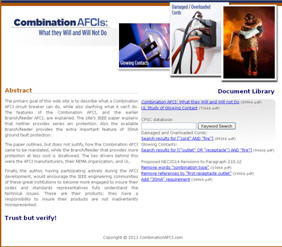|
An insider’s look at the NEC Code making process as it related to AFCIs
Written by Dr. Joe Engel 
All new home branch circuits are required by Code to be electronically protected, either by Ground Fault Circuit Interrupters (GFCIs) or Arc Fault Circuit Interrupters (AFCIs). Areas including kitchens, bathrooms, garages, etc. must be protected by GFCIs, while living areas must be protected by AFCIs. The AFCI is the fourth generation in residential branch circuit protection after fuses, circuit breakers, and GFCIs.
National Electrical Code in 2002 first added AFCI protection, for bedrooms outlets. In 2008, coverage was expanded to all living areas, also adding that only “Combination AFCIs” are allowed. Manufacturers and UL today claim that arcing across a break in a cord’s conductor is hazardous, and that a Combination AFCI will respond to prevent a fire.
A typical claim from a manufacturer’s web site:
“A series arc is an arcing incident across a break in a conductor. A common example is a cut across one of the two wires in a lamp cord, with a dangerous arc forming in the gap. Combination AFCI circuit breakers detect the arcing condition and turn off the circuit, thus providing the enhanced protection.”
When today’s Combination AFCIs were tested for response to series arcing in cords, as claimed by the manufactures, their trade organization NEMA, and UL, they didn’t respond. How can this be? Would the now disallowed Branch/feeder provide more protection at less cost?
If you'd like to test your knowledge of the Combination AFCI circuit breaker, please try answering the following true/false questions.
1. The Combination AFCI, first mandated in NEC 2008, provides more fire protection than the earlier AFCI.
2. The Combination AFCI combines both ground and arc fault protection.
3. The Combination AFCI combines both parallel and series arc protection.
If you answered “true” to any of these questions, you may want to look at this web site.
The answer to these questions may be found on my web site http://www.combinationafci.com
About the Author: Dr. Joe Engel worked as an electronic/electrical circuit designer/manager at Westinghouse’s Science and Technology Center, Pittsburgh PA from 1963 to 1993. From 1993 to 2007 he managed Eaton | Cutler-Hammer’s Electronic R&D Department. He served as a member of numerous IEC, NEC, UL, and SAE panels. He holds over 100 US Patents.
|



